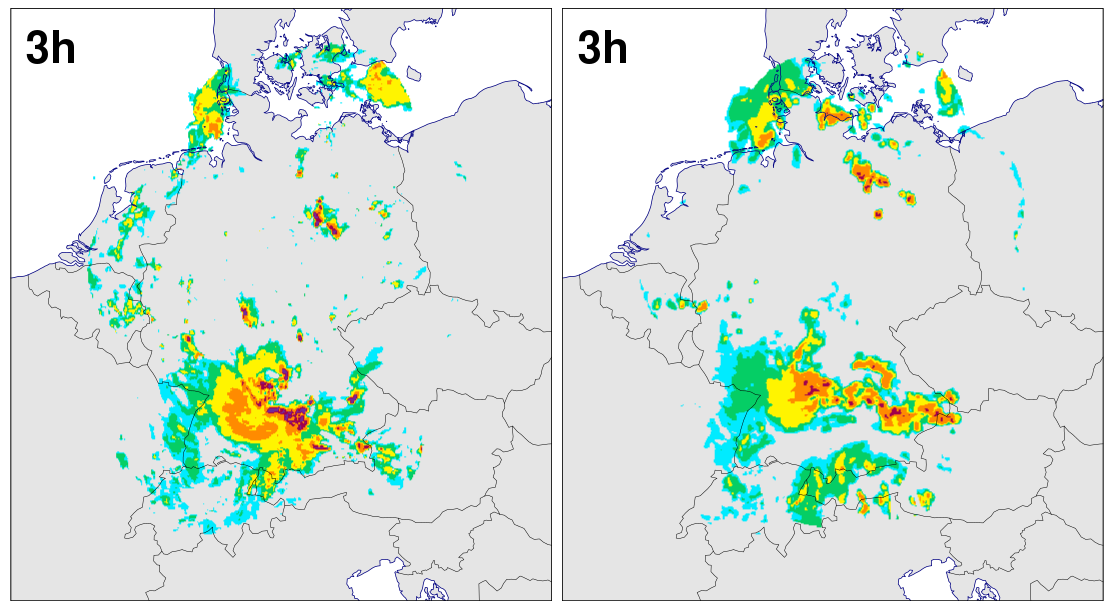Predictability of Deep Convection
18.12.2019

Figure: Observed and forecast precipitation intensity at 17 UTC on 29 May 2016
Predictability of Deep Convection
In this publication, we investigate the predictability of convection
with the quasi-operational high-resolution ensemble weather forecasting system COSMO-KENDA
in both idealized and real world scenarios.
Under idealized conditions we find a longer predictability of convection near the mountains. The assimilation of radar data shows a large positive influence and extends the forecast horizon by up to 6 hours. In order to verify these results under realistic conditions, we have conducted numerical model simulations for the high impact weather period end of May beginning of June 2016 when slowly moving, very intense thunderstorms locally led to floods and major damage. Results demonstrate the beneficial impact of radar data assimilation during this weather period, too. However, their impact time on the prediction quality of convection is reduced to a few hours. This discrepancy indicates the potential to increase the the forecast quality of convection by improving the initial conditions.
Reference:
Bachmann, K., C. Keil, G.C. Craig, M. Weissmann, C. Welzbacher (2020): Predictability of Deep Convection in Idealized and Operational Forecasts: Effects of Radar Data Assimilation, Orography and Synoptic Weather Regime. Mon. Wea. Rev., 148: 63-81. doi:10.1175/MWR-D-19-0045.1

